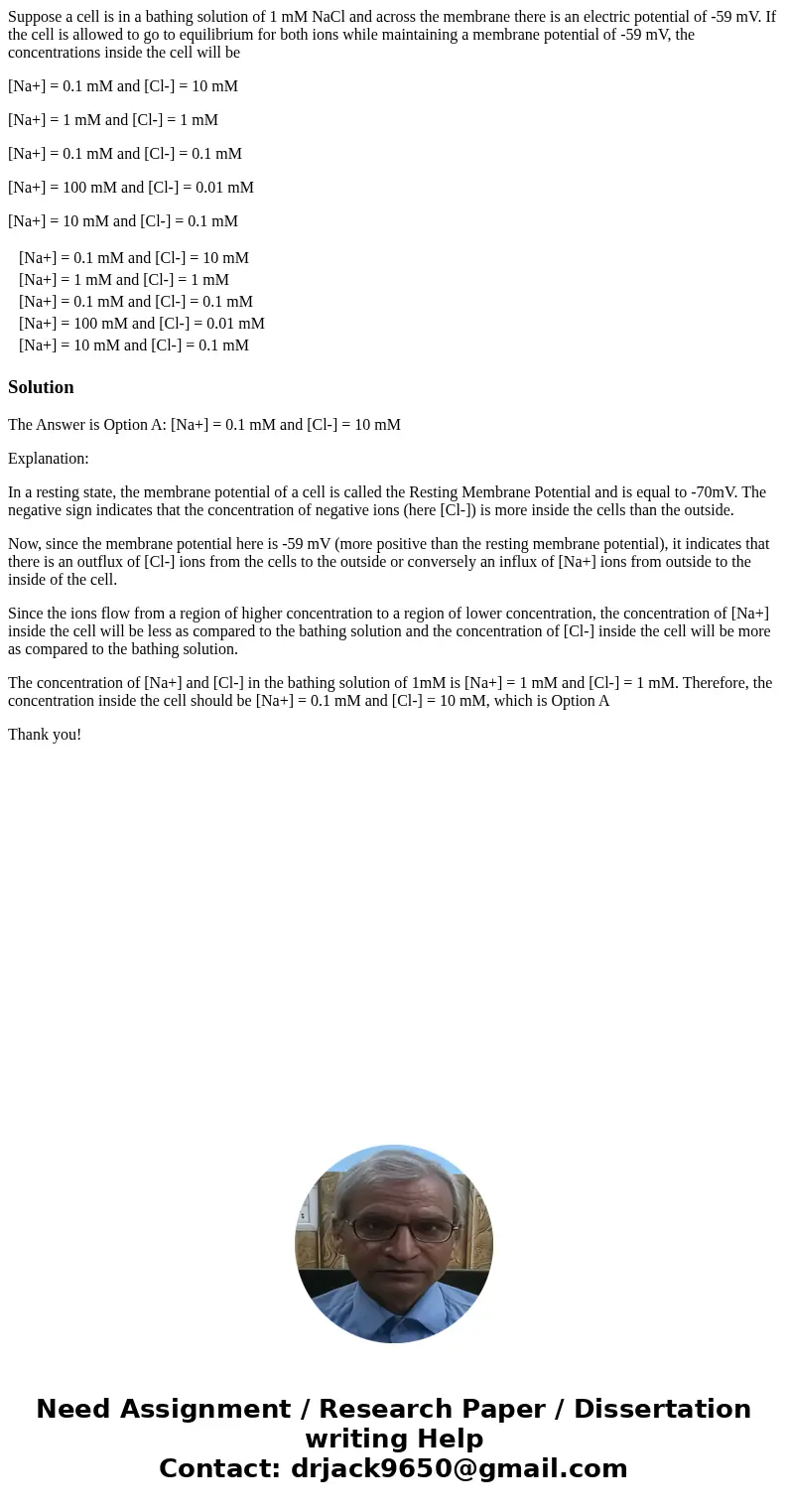Suppose a cell is in a bathing solution of 1 mM NaCl and acr
Suppose a cell is in a bathing solution of 1 mM NaCl and across the membrane there is an electric potential of -59 mV. If the cell is allowed to go to equilibrium for both ions while maintaining a membrane potential of -59 mV, the concentrations inside the cell will be
[Na+] = 0.1 mM and [Cl-] = 10 mM
[Na+] = 1 mM and [Cl-] = 1 mM
[Na+] = 0.1 mM and [Cl-] = 0.1 mM
[Na+] = 100 mM and [Cl-] = 0.01 mM
[Na+] = 10 mM and [Cl-] = 0.1 mM
| [Na+] = 0.1 mM and [Cl-] = 10 mM | ||
| [Na+] = 1 mM and [Cl-] = 1 mM | ||
| [Na+] = 0.1 mM and [Cl-] = 0.1 mM | ||
| [Na+] = 100 mM and [Cl-] = 0.01 mM | ||
| [Na+] = 10 mM and [Cl-] = 0.1 mM |
Solution
The Answer is Option A: [Na+] = 0.1 mM and [Cl-] = 10 mM
Explanation:
In a resting state, the membrane potential of a cell is called the Resting Membrane Potential and is equal to -70mV. The negative sign indicates that the concentration of negative ions (here [Cl-]) is more inside the cells than the outside.
Now, since the membrane potential here is -59 mV (more positive than the resting membrane potential), it indicates that there is an outflux of [Cl-] ions from the cells to the outside or conversely an influx of [Na+] ions from outside to the inside of the cell.
Since the ions flow from a region of higher concentration to a region of lower concentration, the concentration of [Na+] inside the cell will be less as compared to the bathing solution and the concentration of [Cl-] inside the cell will be more as compared to the bathing solution.
The concentration of [Na+] and [Cl-] in the bathing solution of 1mM is [Na+] = 1 mM and [Cl-] = 1 mM. Therefore, the concentration inside the cell should be [Na+] = 0.1 mM and [Cl-] = 10 mM, which is Option A
Thank you!

 Homework Sourse
Homework Sourse